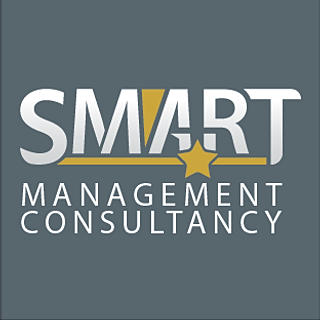Master Risk Management: Essential Strategies for Success
- Smart Management Consultancy
- Sep 1
- 3 min read
In today’s fast-paced and unpredictable world, mastering risk management is crucial for any organization or individual aiming for long-term success. Risks come in many forms - financial, operational, strategic, or compliance-related - and managing them effectively can mean the difference between thriving and failing. This comprehensive guide will walk you through essential risk management strategies that help identify, assess, and mitigate risks systematically.
Understanding the Importance of Risk Management Strategies
Risk management strategies are the backbone of any resilient business or project. They provide a structured approach to foresee potential threats and prepare for them proactively. Without these strategies, organizations often react to problems after they occur, which can be costly and damaging.
Why are risk management strategies vital?
Protect assets and resources: By identifying risks early, you can safeguard your physical, financial, and human resources.
Enhance decision-making: Knowing potential risks allows for better planning and informed choices.
Improve compliance: Many industries require adherence to regulations that mandate risk management.
Increase stakeholder confidence: Investors, customers, and partners trust organizations that manage risks well.
Boost operational efficiency: Anticipating risks helps avoid disruptions and maintain smooth operations.
Examples of effective risk management strategies include:
Diversifying investments to reduce financial exposure.
Implementing cybersecurity protocols to prevent data breaches.
Conducting regular safety audits in manufacturing plants.
Developing contingency plans for supply chain interruptions.

Key Risk Management Strategies to Implement Today
Implementing the right risk management strategies requires a clear understanding of your organization's unique challenges and goals. Here are some essential strategies that can be adapted to various contexts:
1. Risk Identification
The first step is to identify all possible risks that could impact your objectives. This involves brainstorming sessions, expert consultations, and reviewing historical data.
Use tools like SWOT analysis (Strengths, Weaknesses, Opportunities, Threats).
Engage employees at all levels to gather diverse perspectives.
Monitor industry trends and emerging risks.
2. Risk Assessment and Prioritization
Once risks are identified, assess their likelihood and potential impact. This helps prioritize which risks need immediate attention.
Use qualitative methods like risk matrices.
Apply quantitative techniques such as statistical models.
Focus on high-impact, high-probability risks first.
3. Risk Mitigation Planning
Develop strategies to reduce or eliminate risks. This can include:
Avoiding risky activities.
Transferring risk through insurance or contracts.
Implementing controls and safeguards.
Preparing contingency plans.
4. Monitoring and Review
Risk management is an ongoing process. Regularly monitor risk factors and review your strategies to adapt to changes.
Set up key risk indicators (KRIs).
Schedule periodic risk audits.
Update risk registers and action plans.
5. Communication and Training
Ensure that everyone in the organization understands the risk management process and their role in it.
Conduct training sessions.
Share risk reports transparently.
Foster a risk-aware culture.

What is a risk management service?
A risk management service is a professional offering that helps organizations identify, evaluate, and mitigate risks effectively. These services provide expert guidance, tools, and resources tailored to specific industries and business needs.
Key features of risk management services include:
Comprehensive risk assessments.
Customized risk mitigation plans.
Compliance and regulatory support.
Crisis management and recovery planning.
Continuous monitoring and reporting.
By leveraging risk management services, businesses can access specialized knowledge and technology that may not be available in-house. This partnership enhances the ability to manage complex risks and ensures that risk management strategies are aligned with organizational goals.
Example: A manufacturing company might use a risk management service to evaluate supply chain vulnerabilities and develop alternative sourcing strategies to avoid production delays.

Practical Tips for Successful Risk Management Implementation
To make your risk management strategies effective, consider these actionable recommendations:
Start small and scale: Begin with critical areas and expand as you gain experience.
Use technology: Employ software tools for risk tracking and data analysis.
Engage leadership: Secure commitment from top management to drive risk initiatives.
Document everything: Maintain clear records of risk assessments, decisions, and actions.
Encourage feedback: Create channels for employees to report new risks or concerns.
Test your plans: Conduct simulations and drills to ensure readiness.
Stay informed: Keep up with industry developments and regulatory changes.
By following these tips, you can build a robust risk management framework that adapts to evolving challenges and supports sustainable growth.
Building a Risk-Resilient Future
Mastering risk management strategies is not a one-time task but a continuous journey. Organizations that embed risk awareness into their culture and operations are better positioned to seize opportunities and navigate uncertainties confidently.
Investing in risk management today means safeguarding your tomorrow. Whether you are a small business or a large enterprise, adopting these essential strategies will help you minimize losses, optimize resources, and achieve your objectives with greater assurance.
Explore how professional risk management services can support your efforts and elevate your risk management capabilities to the next level.
Start your journey towards risk resilience now and turn potential threats into strategic advantages.















Comments